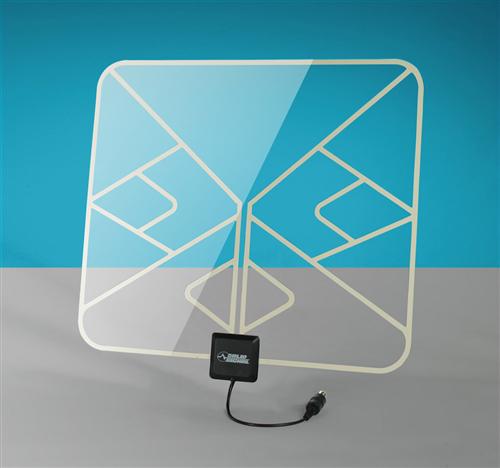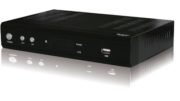There’s something that always seems tantalizing about invisibility. Whether it’s one of the many remakes of The Invisible Man, a sci-fi flick that’s been done over so many times it’s burnt on both sides, or any of the mentions of invisibility in comic books, things that are invisible always seem to pique our attention.
So I set about thinking how you could have an invisible antenna.
Step 1: stop thinking about transparent aluminum
So, yes, you could very easily make an invisible antenna if you used transparent aluminum. For years I thought this was a mythical substance that only existed in Star Trek movies. But, it turns out, it’s a real thing:
Not only is transparent aluminum, properly known as aluminum oxynitride, actually existed at the time that Star Trek IV: The Voyage Home was shot. It’s really only now reaching the point where it’s possible to make it (fairly) inexpensively though.
But that’s not the problem with aluminum oxynitride. As far as I can tell, the substance is clear and it’s mostly aluminum, but it doesn’t conduct electricity. So that’s the end of that.
Step 2: This could actually work although it wouldn’t really be invisible

It seems to me that you could make an antenna out of extremely thin aluminum wires. I mean so thin that they basically disappear from a few feet away. You could sandwich them in clear plastic or even between sheets of glass. So, what you’d essentially have is an antenna which is very hard to see, and stiff enough that you could put it somewhere.
This isn’t too far off track since Solid Signal sold antennas like the one you see above for several years. It’s pretty transparent, but I wouldn’t call it invisible. You could make the elements much thinner and then it would be practically invisible.
The issue there is how well those super-skinny elements would work. Depending on how invisible you needed the whole thing to be, the elements might be too thin to be effective. When you look at FM antennas embedded in auto glass, they are very thin but they are also very large. This says to me they’re not very efficient.
Step 3: Think about how antennas could “seem” transparent
I think the best solution, if you really wanted a transparent antenna, would be to create an antenna that wasn’t transparent at all. I mean, create an antenna that hides in its surroundings. Maybe something that was designed to go around a window or door frame would work. This would give you some flexibility to make an antenna that was large enough and still used mostly traditional construction.
The ultimate transparent antenna
If you really wanted a transparent antenna, you’d need a conductive transparent material. Saline solution, aka salt water, is conductive. But I don’t know if it would make a good antenna. Perhaps you could embed a properly-shaped bubble of saline solution into a double-paned window in a way that it would look transparent. Perhaps that could work. In reality if you were willing to spend enough money I’m sure you could make a transparent antenna work. It’s just a matter of whether or not you, or anyone else, could ever turn a profit on it.
In the meantime, if you’re looking for an antenna rooted in the real world, shop the great selection at Solid Signal.





